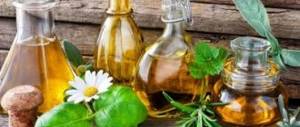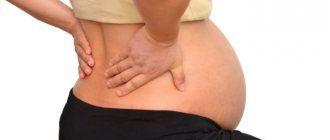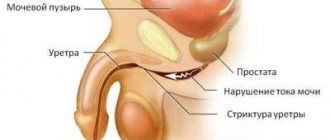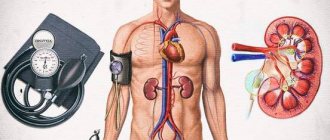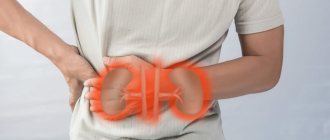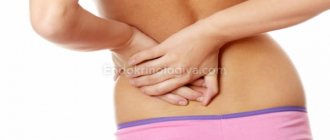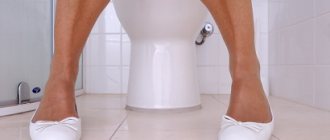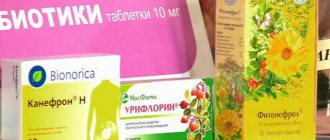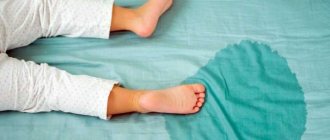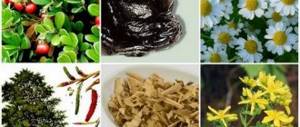Renal colic is a sudden, high-intensity pain that is located near the kidneys or urethra. It arises in the lower part of the paired organ and from there expands throughout the urinary tract. A prolonged attack can lead to fainting, so timely therapy helps save the patient's life. In this article we will look at what renal colic is and what are the treatment methods at home. In the International Classification of Diseases, 10th revision (ICD-10), the condition is designated by code N23.
Urgent Care
Pre-medical first aid for renal colic should be competent and timely. It is necessary to follow the correct algorithm for carrying out special procedures. It is important to understand that only if you are clearly convinced of the diagnosis can you take independent steps and use medications, otherwise you need to urgently seek help from doctors.
Return to contents
What to do with renal colic in the first minutes?
Providing emergency first aid at home is possible with a clear knowledge of all methods for localizing colic. At the first stage, pain can be relieved by using thermal methods and special medications. The sequence of procedures is as follows:
- call an ambulance;
- create a calm environment;
- establish the location of pain;
- monitor possible temperature changes;
- collect urine.
Removing spasms and restoring normal urine flow is the result for which all procedures are carried out during pre-medical care. The kidneys are very sensitive to heat, so the patient must be provided with warm objects: wrap him in a blanket, put a heating pad on him. As a rule, warming the area where the pain occurs leads to its reduction or complete cessation.
Return to contents
How to relieve pain with drugs?
After thermal procedures, the patient can be given painkillers or antispasmodics. Medicines can be in the form of tablets and injections. Antispasmodics for renal colic relieve muscle tone of the ureter, improving the patency of the ducts. Most often, myotropic drugs are used for renal colic (No-Shpa, Papaverine, etc.). If you are concerned about acute pain, it is better to treat pain with the help of combination drugs (“Spazmonet”, “Baralgin”, “Avisan” and others). Let's look at frequently used ones in more detail.
Return to contents
"No-Shpa" ("Drotaverine")
The most popular medicine that is always at hand. It can be taken not only as a medicine for renal colic, but also to relieve any pain. By reducing the supply of calcium to muscle cells, the drug reduces muscle tone. To relieve pain from renal colic, you can take 4 tablets at once, but in case of emergency, to relieve an attack of renal colic, you must administer the drug intramuscularly.
Return to contents
"Baralgin" (BARALGIN)
A potent drug (stronger than No-Shpy). Tablets (0.5-2 pieces several times a day) act much more slowly, because they must go through the entire digestion path. The solution (2 ml) goes directly into the blood, so injections for renal colic are more effective. The drug contains a fairly large dosage of components, and in order to avoid a decrease in blood pressure, it must be administered very slowly. When administered intramuscularly (5ml-1 ampoule), the solution enters the bloodstream and begins to act within a few minutes.
It is forbidden to relieve spasms using Analgin. It can distort the manifestation of symptoms, thereby complicating the diagnosis of the disease.
Return to contents
"Ketorol" (KETOROL)
You can relieve renal colic at home with Ketorol only if you are firmly convinced of the correct diagnosis. The drug helps relieve pain, but at the same time it will cover all the symptoms. For treatment at home, Ketorol is administered intramuscularly. The injection is given slowly (over half a minute), the result occurs after 30 minutes.
Return to contents
"Platifillin"
Refers to drugs that act on cells (cholinergic receptors) in which neuromuscular transmission occurs. It is well tolerated, but not very effective (it resembles Papaverine in action). The attack is stopped by subcutaneous injection of a 0.2% solution (1-2 ml).
Return to contents
Contraindications and restrictions
When providing emergency care, it is important to remember that any method that eliminates kidney pain has its contraindications. Any intervention for renal colic at home should be supported by knowledge:
- It is necessary to ask the patient about any contraindications or allergic reactions to medications.
- It is important to understand that colic cannot be treated with medications without medical supervision. They are used as an aid to relieve an attack of kidney stones. Their long-term use can lead to deterioration of health. Pain is a symptom of a disease that requires full examination and treatment.
- The use of thermal procedures is prohibited during inflammatory processes.
- If a painful attack occurs in an elderly person, it is better to use a heating pad rather than a bath with warm water. This approach will prevent the development of a heart attack.
After providing first aid, you must call a doctor or take the patient to the clinic.
Return to contents
Diet
To prevent colic, they resort to diet No. 7, except in the case of oxalate stones, when diet No. 6 is prescribed, which is used to treat gout.
Kidney diet No. 7 limits the consumption of table salt, includes mainly plant foods and an increased amount of daily fluid intake.
Oxalates
Oxalate stones look like dark-colored thorns. When moving through the ureter, the sharp edges injure the inner surface of the urinary tract, which leads to the appearance of blood in the urine.
Oxalate stones occur with normal urine acidity. The reason for the appearance of oxalate stones is a lack of fluid in the body.
Sorrel, spinach, legumes, and tomatoes are excluded from the menu; beets, carrots, black and green tea are limited. It is useful for oxalate stones to eat dishes with cucumbers, pears, apricots, grapes, Essentuki mineral water No. 20 are useful.
Phosphates
Round, grayish phosphate stones occur in alkaline urine and easily disintegrate when crushed by laser.
For phosphate stones, limit cottage cheese, milk, liver, and kidneys. Do not consume hot spices, smoked meats, cocoa, alcohol, or coffee. Mushrooms, chicken eggs in the diet, and sour cream are limited.
It is useful to drink birch sap and Arzni mineral water. Apples with a sour taste, cranberries, currants, lingonberries are recommended, carotenoids and vitamin D are necessary.
Urats
Hard, yellowish-colored urate stones form in an acidic environment with excess uric acid. For urate stones, it is useful to drink alkaline mineral waters of Essentuki No. 4, No. 17, Slavyanovskaya, Smirnovskaya.
It is recommended to limit meat products containing purines and increase the amount of plant foods, with the exception of legumes. For urate stones, it is useful to include dishes with parsley, celery, and drink a decoction of pumpkin seeds.
After renal colic caused by urolithiasis, the patient has been registered with a dispensary for 5 years. To prevent renal colic, patients must follow a diet, drinking regimen, avoid excessive physical activity, and avoid hypothermia. The video shows how to relieve renal colic and how to treat it:
gidmed.com
When is hospitalization required for renal colic?
The decision to hospitalize is made based on the patient’s symptoms and well-being.
Suspicion of renal colic requires quick action, and an ambulance will transport the patient to the clinic quickly and under professional supervision. Hospitalization is indicated in any case, because kidney stones, having changed their position, can clog the ducts, and the attack will recur. Even with good dynamics, the patient is observed in the hospital for 3 days. There are situations in which hospitalization is mandatory:
- The pain does not go away after using medications.
- Feeling worse: vomiting;
- urinary disturbance;
- complete absence of the urge to urinate.
If relief of renal colic at home has been successful, and the person refuses hospitalization, then he is recommended to eat a diet, apply heat to the back and control when urinating. It is important to collect urine in a clean container to monitor for sediment or stone passage. But it is advisable to conduct an examination with a urologist to exclude the development of complications.
Return to contents
Health care
The doctor’s task in case of renal colic is to relieve the pain attack as quickly as possible.
If painkillers for renal colic do not relieve acute painful sensations, and the duration of renal colic reaches several hours and no improvement is expected, the main task of doctors is to relieve the attack in a short time. Interviewing the patient will provide information about what pre-medical care was taken, which will help in making decisions about further treatment of the patient.
As a rule, stopping an attack always begins with analgesics or antispasmodics. In case of a prolonged attack, droppers from complex medicinal mixtures or novocaine blockade can help. While they are dripping, the nurse performs an independent intervention (monitors the patient’s condition). At this time, a dropper from “Baralgin” No-shpa, “Platifillin”, glucose is indicated, also intramuscular injections of “Analgin”, “Pipolfen”, “Platifillin” are prescribed additionally “Promedol”, “Diphenhydramine”, “Papaverine”, “No” -shpa."
Further therapy consists of finding out the causes of colic and the degree of obstruction of the urinary system. Dependent interventions are required (sampling of material for laboratory tests). If renal colic occurs against the background of an inflammatory process, the doctor will definitely prescribe an antibiotic, most likely broad-spectrum antibiotics. It is not always possible to quickly eliminate the infection in the case of urolithiasis, so drugs are prescribed before the stone is removed from the body. If edema is present, diuretics are prescribed.
Return to contents
A little about the prevention of urolithiasis
As a rule, if an attack occurs once, it will definitely happen again, because urolithiasis is a disease associated, as previously noted, with a disorder of general metabolism. Metabolic disorders occurring in the body bring changes to the genitourinary system long before the onset of an attack of renal colic. In order to avoid future recurrence of an attack or reduce the possibility of its occurrence to a minimum, a person must constantly carry out preventive measures.
Prevention is, first of all, proper nutrition, proper drinking regimen, and periodically repeated courses of herbal medicine (2-3 times a year). Such patients are necessarily advised to visit sanatoriums and resorts with the presence of medicinal mineral waters, which cleanse the genitourinary system well and eliminate metabolic disorders. Spa treatment is indicated at least once a year. Only compliance with preventive measures can make your body healthy and minimize the recurrence of an attack of renal colic.
Treatment with folk remedies
Complex treatment using folk remedies gives positive results.
Treatment at home, as a rule, cannot be done without traditional medicine.
With an integrated approach, the use of herbal remedies gives good results. The pharmacy chain has a fairly large selection of herbal preparations with diuretic and antiseptic effects. In the case of colic due to urolithiasis, the choice of herbal preparations is influenced by the type of stone. Herbs according to stone types
| Mixed stones | Oxalates | Urats | Phosphates |
|
|
|
|
The most effective recipes:
- Apply a warm compress of oat decoction to the kidney area. Excellently expands the ducts and facilitates the passage of stones.
- An infusion of chamomile, sage and centaury relieves pain well. 1 tsp per 200 ml. boiling water Drink 1 tsp for 2-3 months. every 2 hours.
- A decoction of birch leaves (branches, buds). For 1 liter of water you will need 8 tbsp. l. plants, cook for about 20 minutes. Take hot for 1-1.5 hours.
- Infusion of herbs: mint, birch, steelberry root, juniper. For 1 liter of boiling water you will need 6 tbsp. l. mixture of plants, leave for 30 minutes. Let cool and serve warm within an hour.
There are many herbal medicines in the pharmacy that are suitable for helping at home:
- "Phytolysin". The composition of the drug includes wheatgrass, omentum, birch leaves, fennel, horsetail, parsley.
- "Cyston". The composition includes saxifrage, onosma multifolia, madder cordifolia and other plant components. It has an antibacterial and diuretic effect, relieves cramps and dissolves stones.
- "Cistenal". The preparation contains madder root, olive oil and essential oils. Perfectly relieves tone and normalizes urine flow.
There are many remedies that can help relieve pain attacks. But before you look for an answer to the question of how to make a person feel better, it is important to understand that PMP for renal colic is a dependent measure, and even at home should be monitored by a doctor, especially if the cause of the attack is unknown. In addition, by independently making decisions about taking medications, you can miss the development of a serious pathology and provoke complications.
Source: EtoPochki.ru
